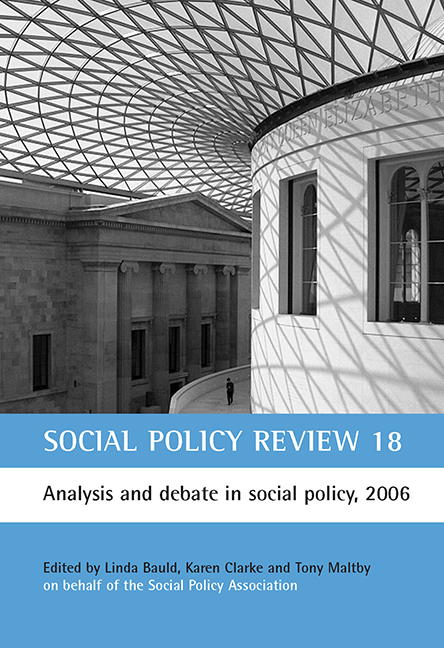fourteen - Ageing and employment: looking back, looking forward
Published online by Cambridge University Press: 15 January 2022
Summary
Introduction
This contribution is based on my experience of setting up and running TAEN, The Age and Employment Network, formerly known as the Third Age Employment Network. It was founded in 1998 as a not-for-profit enterprise and registered charity to find ways of making the labour market operate more effectively for people in mid- and later life. It is sponsored by and co-located with Help the Aged. Its members now include over 250 organisations, made up of employers, training providers, colleges, recruitment and employment agencies, voluntary and community organisations, public agencies at national, regional and local level, individuals, unions, employment lawyers, think tanks and others. Drawing on their experience, TAEN is able to play an influential part in all relevant public policy work.
In this chapter I look first of all back over the changes that have taken place in the eight years that TAEN has been operating. I then look at some of the major themes that must underpin plans for extending working life and for changing the pattern of retirement.
1998-2006: the changing perspective
The momentum for the foundation of TAEN was the feeling of deep frustration felt by many people who found themselves cast on the shelf well before they thought they were ready to be put there. Nobody else seemed to be interested in their fate. We were still in an era that Adair Turner and his colleagues on the Pensions Commission were subsequently to describe as a ‘fool's paradise’ (Pensions Commission, 2004).
Unlike the previous Conservative government, after coming to power in 1997 the Labour government started to take an interest in age and employment. New Deal 50 plus was in preparation to add to the New Deal for Young People. A Code of Good Practice on age and employment was issued. However, all this hardly registered on the Richter scale of political and business interest. Youth was a leitmotif of New Labour and ending youth unemployment an understandable central objective.
Now, at the time of writing in 2006, there is a very different perspective. There is widespread recognition that age and demographics is an important dimension of the labour market, that patterns and stages of life and work are changing.
- Type
- Chapter
- Information
- Social Policy Review 18Analysis and Debate in Social Policy, 2006, pp. 293 - 312Publisher: Bristol University PressPrint publication year: 2006



